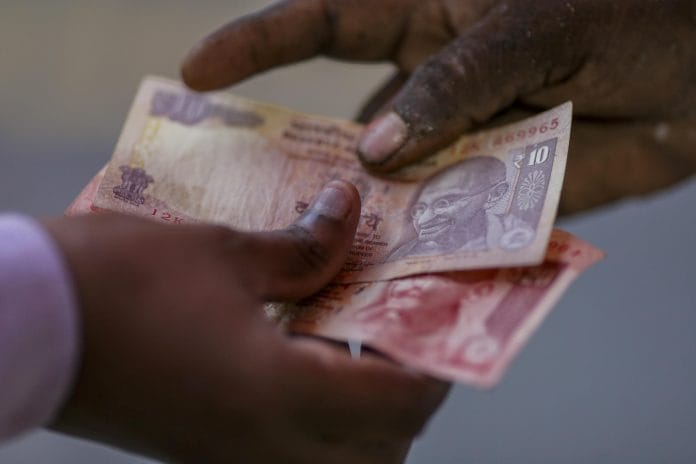Bank lending to households has been at an all-time high for a while. This has predictably led to questions of what will happen if we see significant loan defaults? Will banks be forced to write off these loans, and how will that impact their balance sheets? Since a large proportion of these loans are unsecured, how will banks actually collect repayments? Could this lead to more harassment of borrowers? These concerns are probably on the top of the minds of the Reserve Bank of India, banks and non-bank financial institutions, and their investors.
Dealing with personal insolvency is different from corporate insolvency. It will require standardised plans that banks and other lenders can use if we hope to recover some amounts from the loans that are going to go bad in the coming months and years.
Debtors vs creditors in insolvency law
When a limited liability firm is not able to pay creditors, the assumption is that there is something problematic about the firm, and an insolvency law should find ways to facilitate repayment. Our collective experience has been that firms are misbehaving, and it is banks (and other creditors) who end up with the short end of the stick. Therefore, India’s insolvency law is relatively creditor-friendly, as we don’t have a formal debtor-in-possession model. If a firm defaults and a creditor files an insolvency petition, a “committee of creditors” takes over, effectively stripping the debtor of control over the firm. The firm may end up with a different set of people, or liquidated to repay creditors. While there are concerns about cutting the debtor off completely, India’s Insolvency and Bankruptcy Code 2016 (IBC) has not faced criticism on this count.
However, this equation changes when one considers retail borrowers—people like you and me. When an individual borrows and is unable to repay, it becomes difficult to argue that the creditor must be repaid at any cost. Individuals cannot be entirely stripped of their assets—they need enough money to live a reasonable life. They need a roof over their head, their children must be fed, they must have the means to earn a living, and healthcare expenditures must be met. In fact, the pressure actually shifts to the creditors to engage in humane ways of debt recovery, while ensuring the individual’s life and dignity. The ability to recover money, even when cost-effective, is limited.
This is the crux of the issue of a debt collection mechanism, and a personal insolvency law for individuals. On the one hand, there are concerns about the well-being and dignity of debtors and their families. On the other hand, there are creditors’ balance sheets. Going toward either extreme is counter-productive. If the law is very debtor-friendly, then individuals can do foul play, and creditors may stop giving credit. If the law is very creditor-friendly, then it makes debtors risk-averse and imposes difficulties when faced with distress.
Also read: Loan-to-deposit ratio to subside on its own in coming months: Motilal Oswal
Personal insolvency in the IBC
The IBC has some mechanisms that may help us arrive at some balance. The “Fresh Start (FS)” process of the IBC allows poor debtors to ask for a fresh start—that is a waiver of their debts so that they get a second chance at life. Their credit records will reflect this, and for some time, credit may be a little scarce. But this allows debtors to resolve credit distress. If a large number of debtors choose this option, then this might have an impact on the creditors’ balance sheets. The Insolvency Resolution Process (IRP) allows for the renegotiation between debtors and creditors to find some resolution to the problem. If there is no resolution, the law allows certain assets of the debtor to be sold into “bankruptcy”, and the proceeds go to repay the creditor.
While this sounds simple in theory, it is anything but. It is perhaps one reason why the law has still not been notified. There are concerns about who qualifies for a fresh start, how to measure the assets of the debtor, and how to determine if the debtor is actually capable of making the repayment or needs help. If the qualification threshold is too high then too many qualify; if too low, too few will.
Additionally, how are we going to ensure a negotiation process between the debtor and creditors so that we can account for the power asymmetry? Sometimes, the process itself could be so expensive that it may not be worth it. In such cases, do creditors have no option but to write off the loan? Having to make a repayment plan in each case may become expensive, and complicated. Moreover, if there is shame involved in the negotiation process, individuals may be reluctant to engage at all.
Specify the repayment plan ex-ante
One process reform that the government or the regulator could consider is adopting a “model baseline plan” that solves some of this discretion. In a paper written in 2020, Designing a Personal Insolvency Regime: A Baseline Framework for India’s Insolvency and Bankruptcy Code, Prof. Adam Feibelman and I had proposed repayment plans and other aspects of the insolvency process should be standardised—enough to ensure a baseline treatment of both debtors and creditors, subject to some flexibility for unique or exceptional circumstances.
The five aspects that could be standardised include the amount of income that debtors are expected to repay during the plan period; the amount and types of assets that debtors are expected to relinquish; the duration of repayment plans; the treatment of secured claims under plans; and the amount of debt that is to be discharged under plans. Such an approach may help us navigate the period of high credit stress on household balance sheets, which is very likely lurking around the corner.
Renuka Sane is managing director at TrustBridge, which works on improving the rule of law for better economic outcomes for India. She tweets @resanering. Views are personal.






